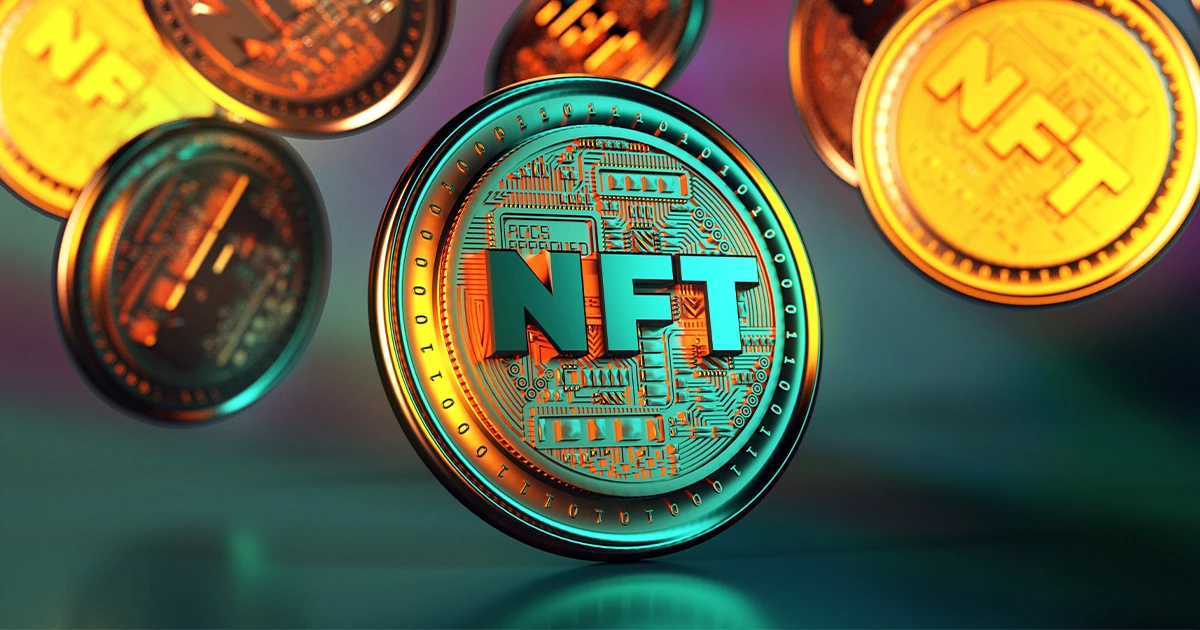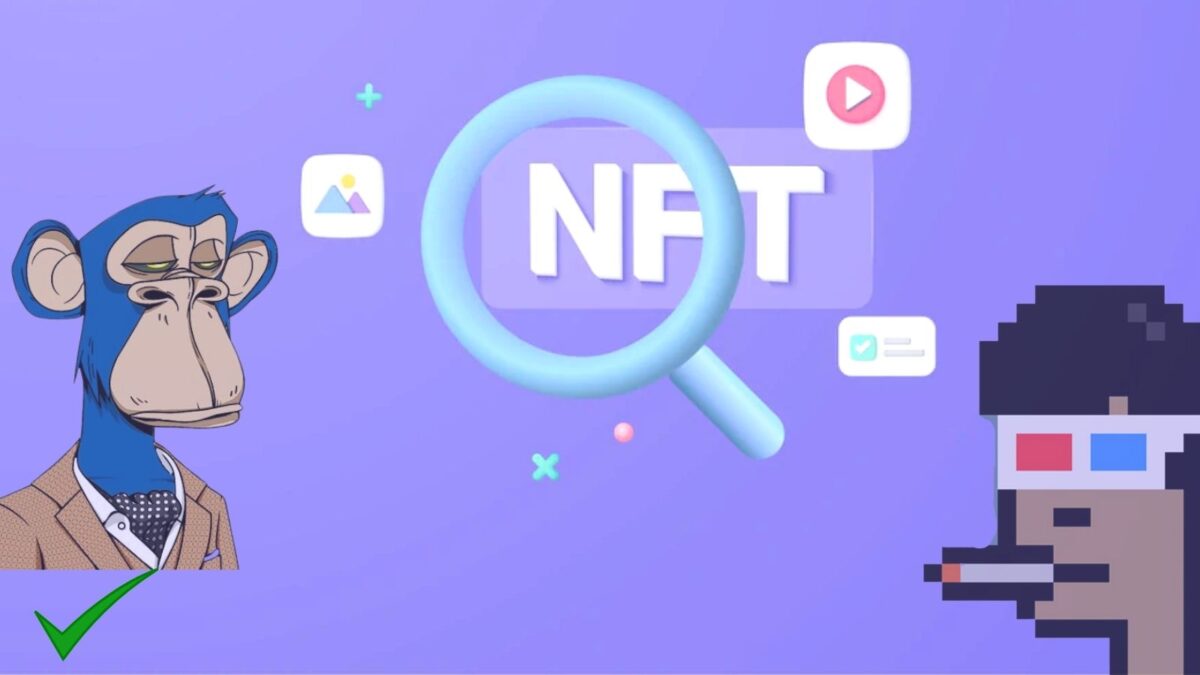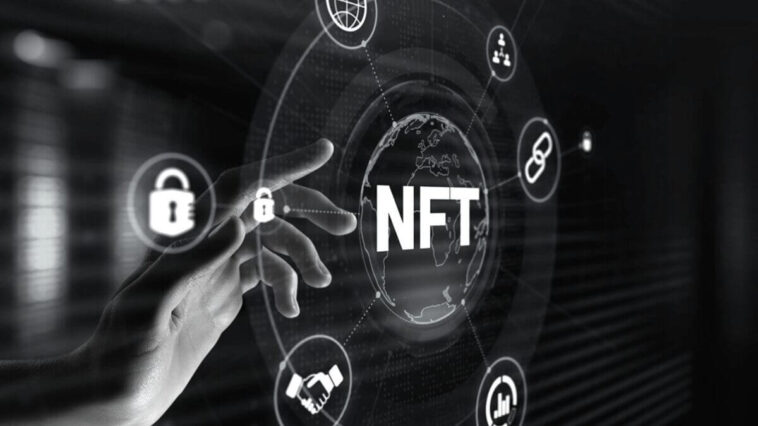In the swiftly changing digital landscape, three revolutions stand out – Artificial Intelligence (AI), Cryptocurrencies, and Non-Fungible Tokens (NFTs).
As these realms intersect, the future of trading seems poised for change unlike any we’ve seen before. Here’s an exploration of the imminent metamorphosis of digital trading, with a special focus on NFTs.
1. Personalized NFT Discoverability
The vastness of the NFT market can make it challenging for collectors to discover new pieces or artists that align with their interests.
AI, with its data-driven insights, can curate personalized suggestions, enhancing the user experience. This not only aids collectors but also promotes lesser-known artists, offering a more democratized marketplace.
2. NFT Valuation and Authenticity

Valuating art, even in the traditional sense, is subjective. With NFTs, this becomes even more complex given their digital nature.
AI can bring some clarity to this arena by analyzing historical sales data, artist prominence, rarity, and other attributes to provide a more grounded valuation.
Moreover, AI algorithms can assist in proving the authenticity of NFTs, ensuring that collectors are purchasing genuine digital assets.
3. Enhanced Security in the NFT Space
As with cryptocurrencies, the security of NFTs is paramount.
Advanced AI systems can monitor the blockchain for irregularities, helping to prevent theft, fraud, or duplication.
This adds an additional layer of trust and assurance for both creators and collectors.
4. Predictive Analysis for NFT Trends
For investors and artists alike, understanding the trends of the NFT market can be invaluable. AI can parse through vast amounts of data, from social media sentiment to auction results, predicting which types of NFTs or artists might gain traction next.
5. Automated Bidding and Trading Systems
Just as with cryptocurrencies, automated trading systems powered by AI can be developed for the NFT market. These systems can execute purchases or bids based on predefined criteria, ensuring that collectors don’t miss out on coveted pieces.
6. Bridging Cryptocurrencies and NFTs

Given that NFTs are bought using cryptocurrency, there’s an inherent connection between the two. AI can streamline this integration further. For instance, by monitoring cryptocurrency fluctuations, AI can advise NFT investors on the best times to buy or sell their assets.
7. Regulatory and Ethical Compliance
The world of NFTs is still largely unregulated. As authorities start to shape guidelines and rules, AI can assist platforms and individuals in staying compliant, reducing the risk of inadvertent infringements.
8. Enhanced User Experience through Virtual Reality (VR) and Augmented Reality (AR)
While this is more of a fusion of tech trends, imagine using AI-driven VR or AR tools to explore NFT galleries or view digital art in one’s own space before purchasing. This elevates the entire experience of NFT trading and collecting.
9.Environmental Impact
The rise of cryptocurrencies and, by extension, Non-Fungible Tokens (NFTs) has brought with it
significant environmental concerns. Cryptocurrency mining, especially for networks like
Ethereum, which many NFTs rely on, consumes vast amounts of energy. This energy
consumption often comes from non-renewable sources, contributing to carbon emissions. For
instance, the carbon footprint of Bitcoin mining rivals that of some countries. As NFTs gain
traction, their environmental impact becomes a pressing issue that cannot be ignored.
10. Legal and Intellectual Property Issues

NFTs operate in a relatively new digital space, leading to numerous legal challenges. One major
concern is copyright. When an artist mints an NFT, are they transferring the copyright or just a
digital certificate of their work? Furthermore, the decentralized nature of blockchain complicates
matters. Standardized contracts, which define ownership rights and usage terms, become
essential. As the NFT market matures, clear legal frameworks will be crucial to its sustainability.
11. Market Volatility
The cryptocurrency market is known for its volatility, and NFTs are no exception. Prices can
skyrocket, but they can also plummet, leading to potential financial losses. However, Artificial
Intelligence (AI) offers a solution. AI-driven tools can analyze vast amounts of market data to
predict trends, helping investors make informed decisions and manage risks more effectively.
12. Scalability
As NFT platforms grow in popularity, they face scalability challenges. Transaction speeds can
slow down, and fees can increase. However, AI can optimize these platforms. Through machine
learning algorithms, AI can predict transaction volumes and adjust system resources
accordingly, ensuring smooth and cost-effective operations.
13. Blockchain Technology Advancements
Blockchain technology is continually evolving. Innovations, such as Ethereum‘s transition to a
proof-of-stake model, aim to address environmental concerns. These advancements can
reshape the NFT landscape. AI, with its adaptive algorithms, can help platforms navigate these
changes, ensuring they remain efficient and user-friendly.
14. Interoperability
Currently, NFTs minted on one blockchain network may not be easily transferred to another.
However, the future promises greater interoperability between different NFT platforms and
blockchain networks. AI can play a pivotal role here, facilitating seamless transactions across
diverse ecosystems by automatically converting and reconciling data between different
blockchains.
15. Education and Awareness
The world of NFTs, cryptocurrencies, and AI-driven trading can be complex. Ensuring that users
are well-informed is paramount. Comprehensive educational resources, backed by credible
research, can demystify these topics. By understanding the benefits and risks, users can
engage responsibly, ensuring the long-term viability of the digital trading space.
16. Social and Cultural Implications
NFTs are more than just digital assets; they're reshaping our cultural landscape. In the art world,
they challenge traditional notions of ownership and value. Digital artists, who once struggled to
monetize their work, now find themselves in a booming market. However, this also raises
questions about the very nature of art and its value. Moreover, NFTs redefine digital ownership,
prompting us to reconsider what it means to "own" something in the digital age.
Conclusion
The convergence of AI, Cryptocurrency, and NFTs is not just reshaping the future of digital trading—it’s redefining how we perceive value, ownership, and art in the digital realm. As these technologies continue to mature and integrate, they will undeniably pave the way for a more connected, efficient, and vibrant digital economy. While we need to navigate this new frontier with caution, ensuring ethical and fair practices, the horizon is undoubtedly exciting.




